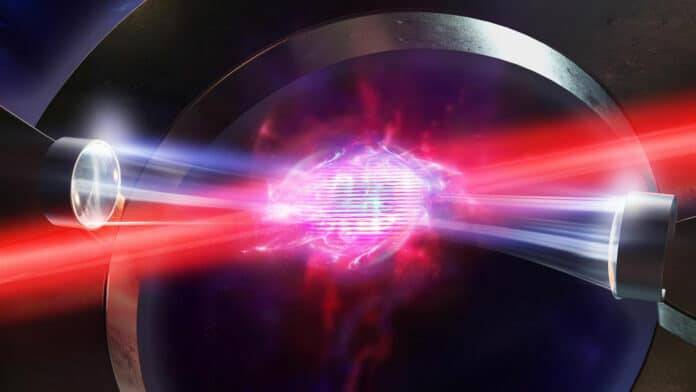Physicists Create New Exotic State of Matter: Bosonic Correlated Insulator
This is the first time a highly ordered crystal of bosonic particles called excitons has been created in a real — as opposed to synthetic — matter system.
Subatomic particles come in one of two broad types: fermions and bosons. One of the biggest distinctions is in their behavior.
Bosons can occupy the same energy level; fermions don’t like to stay together. Together, these behaviors construct the Universe as we know it..
Fermions, such as electrons, underlie the matter with which we are most familiar as they are stable and interact through the electrostatic force.
Meanwhile bosons, such as photons, tend to be more difficult to create or manipulate as they are either fleeting or do not interact with each other.
“A clue to their distinct behaviors is in their different quantum mechanical characteristics,” said first author Richen Xiong, a graduate student at the University of California at Santa Barbara.
“Fermions have half-integer spins such as 1/2 or 3/2 etc., while bosons have whole integer spins (1, 2, etc.).”
“An exciton is a state in which a negatively charged electron (fermion) is bound to its positively charged opposite hole (another fermion), with the two half-integer spins together becoming a whole integer, creating a bosonic particle.”
To create and identify excitons in their system, Xiong and colleagues layered the two lattices and shone strong lights on them in a method they call pump-probe spectroscopy.
The combination of particles from each of the lattices (electrons from the tungsten disulfide and the holes from the tungsten diselenide) and the light created a favorable environment for the formation of and interactions between the excitons while allowing the researchers to probe these particles’ behaviors.
“And when these excitons reached a certain density, they could not move anymore,” said senior author Dr. Chenhao Jin, a physicist at the University of California at Santa Barbara.
Thanks to strong interactions, the collective behaviors of these particles at a certain density forced them into a crystalline state, and created an insulating effect due to their immobility.
“What happened here is that we discovered the correlation that drove the bosons into a highly ordered state,” Xiong said.
Generally, a loose collection of bosons under ultracold temperatures will form a condensate, but in this system, with both light and increased density and interaction at relatively higher temperatures, they organized themselves into a symmetric solid and charge-neutral insulator.
The creation of this exotic state of matter proves that the researchers’ moiré platform and pump-probe spectroscopy could become an important means for creating and investigating bosonic materials.
“There are many-body phases with fermions that result in things like superconductivity,” Xiong explained.
“There are also many-body counterparts with bosons that are also exotic phases.”
“So what we’ve done is create a platform, because we did not really have a great way to study bosons in real materials.”
“While excitons are well-studied, there hadn’t until this project been a way to coax them to interacting strongly with one another.”
With the team’s method, it could be possible to not only study well-known bosonic particles like excitons but also open more windows into the world of condensed matter with new bosonic materials.
“We know that some materials have very bizarre properties,” Dr. Jin said.
“And one goal of condensed matter physics is to understand why they have these rich properties and find ways to make these behaviors come out more reliably.”
#ExoticMatter #BosonicCorrelatedInsulator #NewPhysicsDiscovery #QuantumPhysics #MatterStateBreakthrough #CondensedMatterPhysics #BosonsInnovation #QuantumPhenomenon #PhysicsAdvancements #CorrelatedInsulator #QuantumMaterials #BosonResearch #CuttingEdgeScience #MatterStateExploration #PhysicsBreakthrough




Comments
Post a Comment